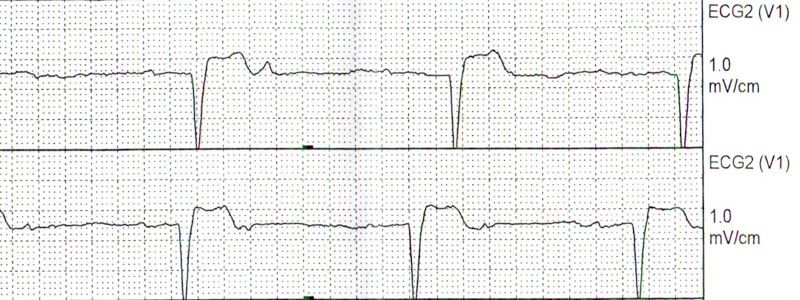In 2:1 block, there exists a distinct relationship between the atria and ventricles. There are two p waves for every QRS, with one p wave being blocked (either in the AV node or below the AV node) and the next beat being conducted down to the ventricles. In 2:1 block, you do not have enough information (although There are clues to suggest where the block may lie) to identify it as type I or type II block. Put another way, in type I block, you have several beats to observe an prolonging PR interval. In 2:1 Block, you don't have that many beats to see if that observation can be made. Therefore, 2:1 block is put in it's own category.
ECG Features:
1. Two P waves for every QRS
2. The P wave that conducts to the ventricle (P wave followed by QRS) will have a fixed PR interval
